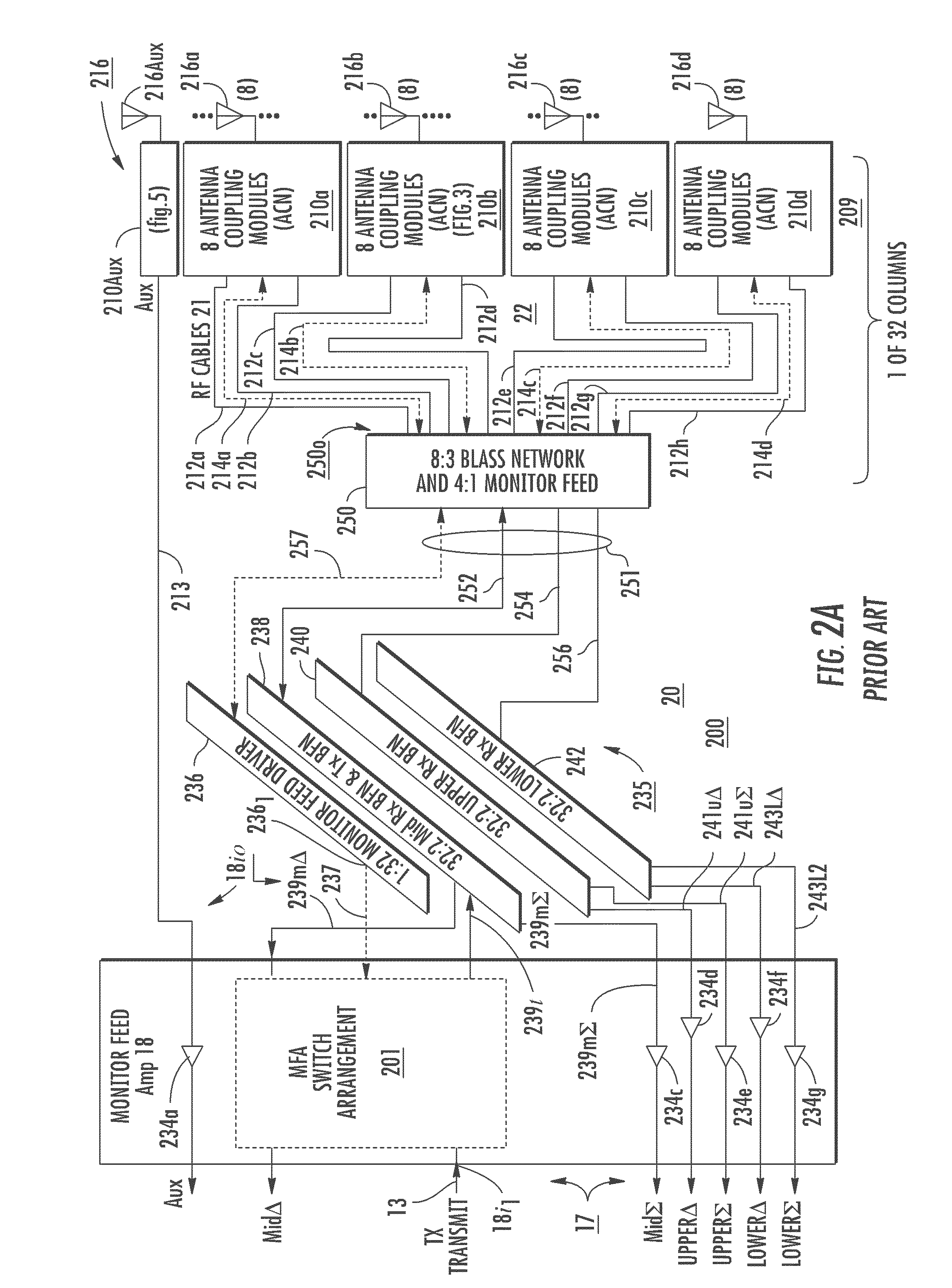Radar calibration structure and method
a technology of applied in the field ofradar calibration structure and method, can solve the problems of limited antenna beam slew rate, physical limitations to the amount of power that can be generated practically or economically, and cannot ordinarily be modified by the beam shap
- Summary
- Abstract
- Description
- Claims
- Application Information
AI Technical Summary
Problems solved by technology
Method used
Image
Examples
Embodiment Construction
[0036]FIG. 6 is a simplified or notional representation of the desired calibration paths and undesired leakage paths in the radar system of FIG. 1. Elements of FIG. 6 corresponding to those of FIGS. 1 and 2 are designated by like reference numerals. In FIG. 6, the desired calibration signal paths are indicated by straight solid-line arrows, and undesired signal leakage paths by curled arrows. Directional arrows 96 and 98 are dashed. More particularly, the desired calibration signal paths include, starting from the exciter 12, the path 13, the MFA 18, path 19, beamformer portion 235, paths 251, Blass portion 250, and paths 21 to the antenna coupling networks of the one illustrated octapack 210b. That is to say, that in order to characterize each of the forward paths 96 (from exciter toward antennas) and reverse paths 98 (from antennas toward receiver), excitation signal is transmitted through the forward paths, coupled to a return path in an antenna coupling element, and returned to ...
PUM
 Login to View More
Login to View More Abstract
Description
Claims
Application Information
 Login to View More
Login to View More - R&D
- Intellectual Property
- Life Sciences
- Materials
- Tech Scout
- Unparalleled Data Quality
- Higher Quality Content
- 60% Fewer Hallucinations
Browse by: Latest US Patents, China's latest patents, Technical Efficacy Thesaurus, Application Domain, Technology Topic, Popular Technical Reports.
© 2025 PatSnap. All rights reserved.Legal|Privacy policy|Modern Slavery Act Transparency Statement|Sitemap|About US| Contact US: help@patsnap.com



